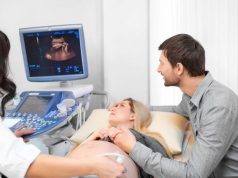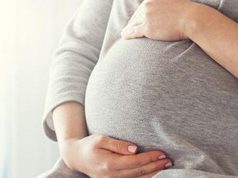Ratio had better performance for predicting preeclampsia with severe features than standard clinical measures
By Elana Gotkine HealthDay Reporter
WEDNESDAY, Nov. 16, 2022 (HealthDay News) — For women with a hypertensive disorder of pregnancy, the ratio of serum soluble fms-like tyrosine kinase 1 (sFlt-1) to placental growth factor (PlGF) can stratify the risk for developing preeclampsia with severe features (sPE), according to a study published online Nov. 9 in NEJM Evidence.
Ravi Thadhani, M.D., M.P.H., from Cedars-Sinai Medical Center in Los Angeles, and colleagues prospectively measured the sFlt-1:PlGF ratio in pregnant women hospitalized between 23 and 35 weeks of gestation across 18 U.S. centers. A total of 1,014 women were evaluated: 299 and 715 were included in the derivation and validation cohorts, respectively. Predicting sPE was the primary outcome.
The researchers found that the median sFlt-1:PlGF ratio was 200 and 6 among women who developed sPE and did not in the derivation cohort, respectively. The discriminatory ratio of ≥40 was tested in the validation cohort and yielded a 65 and 96 percent positive and negative predictive value for the primary outcome, respectively. Compared with standard clinical measures, the ratio had better performance (area under the receiver operating characteristic curve, 0.92 versus <0.75). Women with a ratio ≥40 had a higher risk for adverse maternal outcomes compared with those with a ratio <40 (16.1 versus 2.8 percent; relative risk, 5.8).
“We anticipate that this blood test may eventually lead to better health outcomes for mothers and their babies,” a coauthor said in a statement. “Having an accurate test would help us ensure that the mother was in the right hospital for management of her care and that of her preterm baby.”
Thermo Fisher Scientific funded the study and provided in-kind assays for angiogenic factors. Two authors are listed as co-inventors of patents.
Copyright © 2022 HealthDay. All rights reserved.








